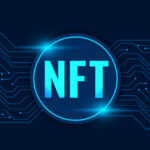Risk and security compliance is crucial for successful technology deployment. No matter the technology, security always comes first. Although the blockchain paradigm is impervious to manipulation, security flaws and vulnerabilities still exist. It’s just as crucial to monitor the blockchain ecosystem as other technologies. The blockchain is also subject to cybersecurity measures. Working with big industries like finance, healthcare, supply chain, and others make security even more crucial. Undoubtedly, blockchain technology is secure, yet several problems also arise. Regulation compliance and data privacy are two of the issues. Notorious hackers have been exploiting system flaws to steal millions, if not billions, of dollars. One of these was the DAO hack. Organizations must therefore comprehend the blockchain’s security system.
The Four Types of Blockchain Security Attacks
- Phishing Attacks: A way to learn more about the person is through the attack. Emails that seem to be from a trusted source but are fraudulent sent to owners of wallet keys. The emails ask recipients for their login information by using bogus hyperlinks. Users lose out, and the blockchain network naturally suffers as well.
- Routing Attacks: Hackers steal data during transfers to and from internet service providers when they conduct routing attacks. To block communication, the hackers split the blockchain network into separate segments. Once the attack is over, the attacker’s newly constructed chains are broken.
- Sybil Attacks: Hackers in a Sybil attack create and use several fictitious network identities to overload and crash the network. A network node has several active identities. The identities want to rule the chain with a majority. Outsiders may mistakenly believe false identities are real, making the system more prone to attack.
- 51 Percent Attacks: Renting minting hash from a third party enables 51 percent of attacks when a miner or group of miners’ combined mining power on a blockchain network exceeds 50 percent. If you own more than 50 percent of the power, you are said to be in control of the network. Even while the possibility of a 51 percent attack is relatively low, it shouldn’t be completely ignored.
Key Features of Security Software
Using security software for blockchain-compliant networks has some key features, including the following:
- Investigation and Monitoring: This feature lets users check out digital currency transactions. Transaction tracking is done via automatic route detection. In addition to risk assessment, ratings are given as part of the investigation and monitoring.
- KYT (Knowing Your Transactions): You can effortlessly analyze and delve into transactions with KYT. KYT gives details on their real identities to information on blockchain addresses. KYT examines the company blockchain critically to spot fraudulent transactions.
- Navigation Assistance: With navigation assistance, which offers robust traceability and customizable risk criteria, you get constant and accurate knowledge of the money that comes from and goes to. The navigation assistance follows the path flow of the blockchain.
- VASP (Virtual Asset Service Provider): VASP monitors risk and ensures regulatory compliance. When transactions between virtual assets take place, the VASP is crucial. VASP verifies identity, tracks cryptocurrency activity, and facilitates law enforcement and regulations, which helps you become blockchain compliant.
Solutions for Managing Security & Compliance
Administrators must choose security measures based on the following criteria to reduce risks and threats:
The platforms must create a risk model that can account for every business, governance, technological, and procedural risk. Enforcing security rules according to the type of blockchain network is crucial. A blockchain platform will implement industry-standard security measures and business regulations for blockchain.
A blockchain management platform offers management services after encrypting the keys, keeping the private keys secure. Node backup should be available to initiate on-demand or scheduled backups. Data minimization is a practice adopted in addition to multi-factor authentication for safe blockchain network connectivity. As part of data minimization, only necessary data is allowed to be on-chain.
Finally, it is necessary to investigate the resilience needs of a blockchain system. This safeguards the backup environment and incorporates tamper-resistant hardware. Businesses must keep an eye on cryptoanalysis. In any other case, it might harm their systems.





